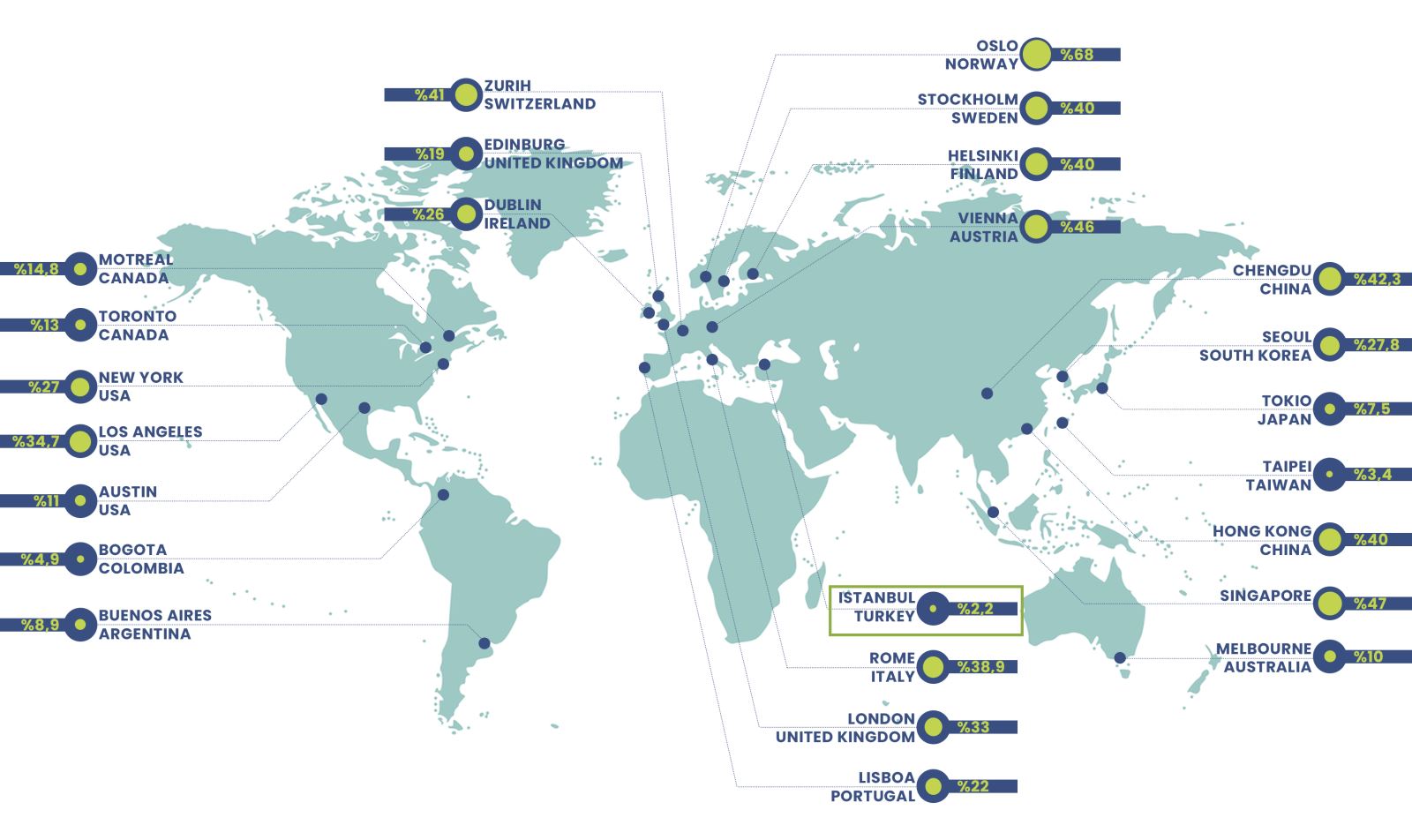There are various standards and criteria at the national and international levels for the planning of open and green spaces. The planning of open and green spaces in Istanbul is carried out in accordance with the standards in the national legislation. This section includes the determined standards as well as information on which decisions were taken regarding the open and green spaces of Istanbul in previous studies and as a result of these, how the amount of green space in Istanbul is on a global scale.
National Standards
Two basic regulations affecting open and green space planning in our country have been examined within the scope of the work. These; Spatial Plans Construction Regulation and Planned Areas Zoning Regulation
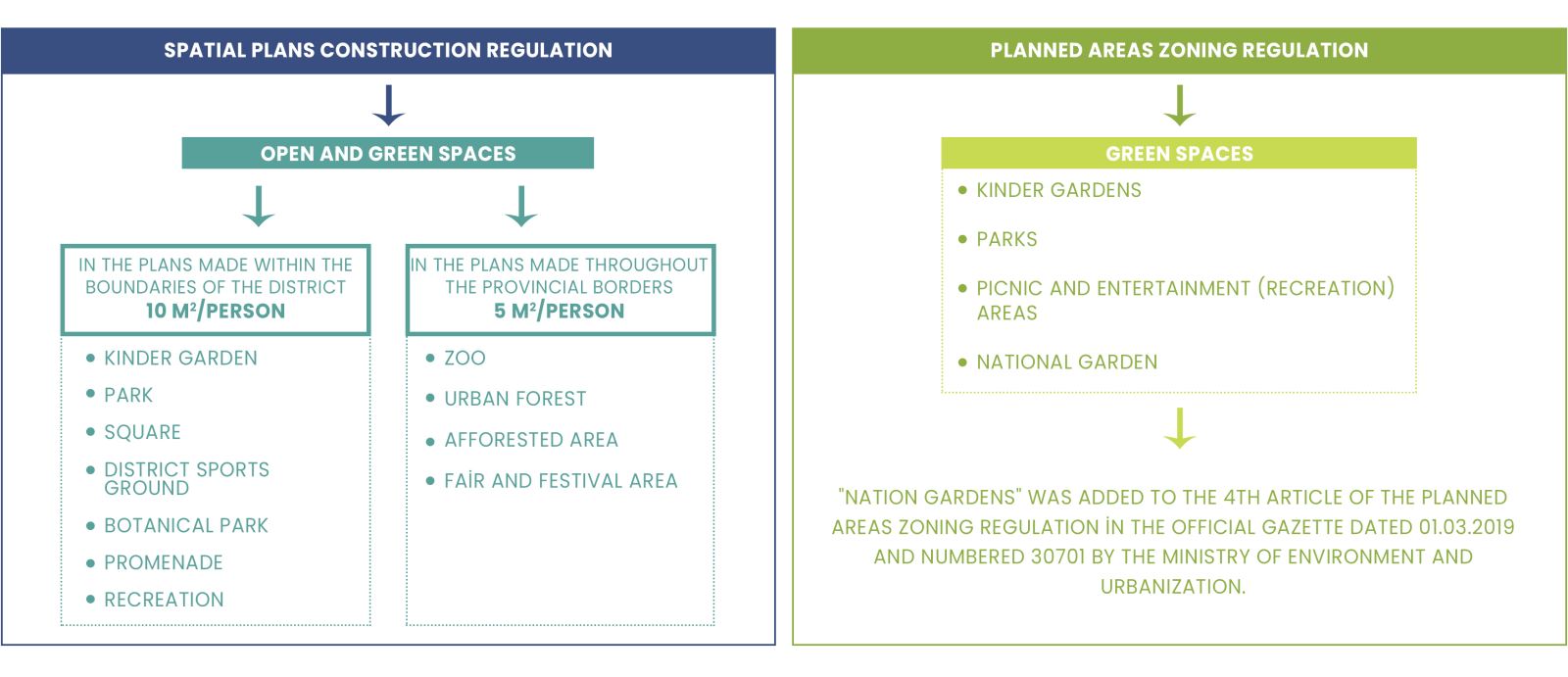
Previous Studies
Within the scope of the work, the decisions taken for the open and green spaces of Istanbul were examined in the Istanbul 1/100,000 scale Environmental Plan and the "Increasing the Urban Resilience and Coping Power of Istanbul in the Face of Possible Acute Shock and Chronic Stress.
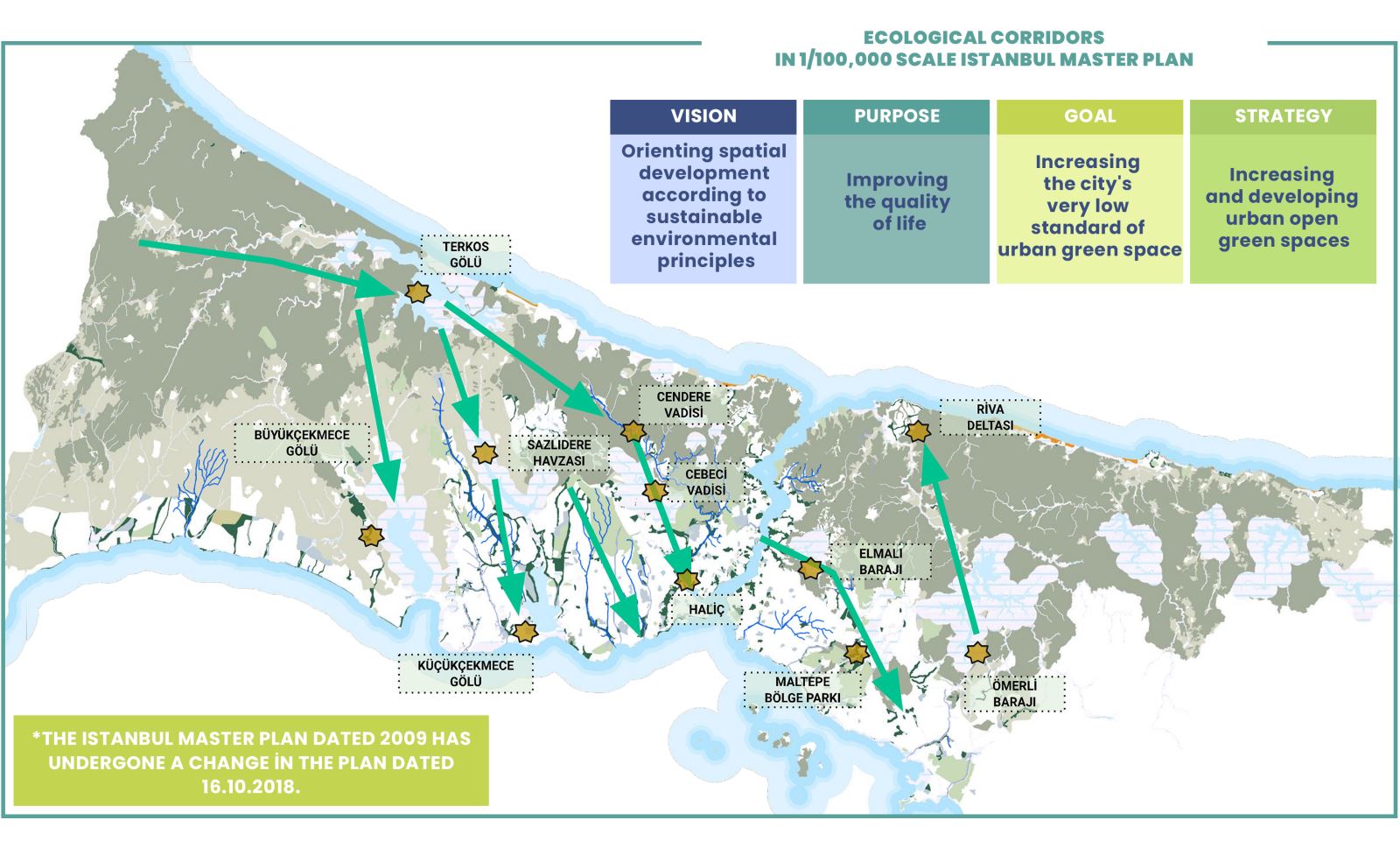
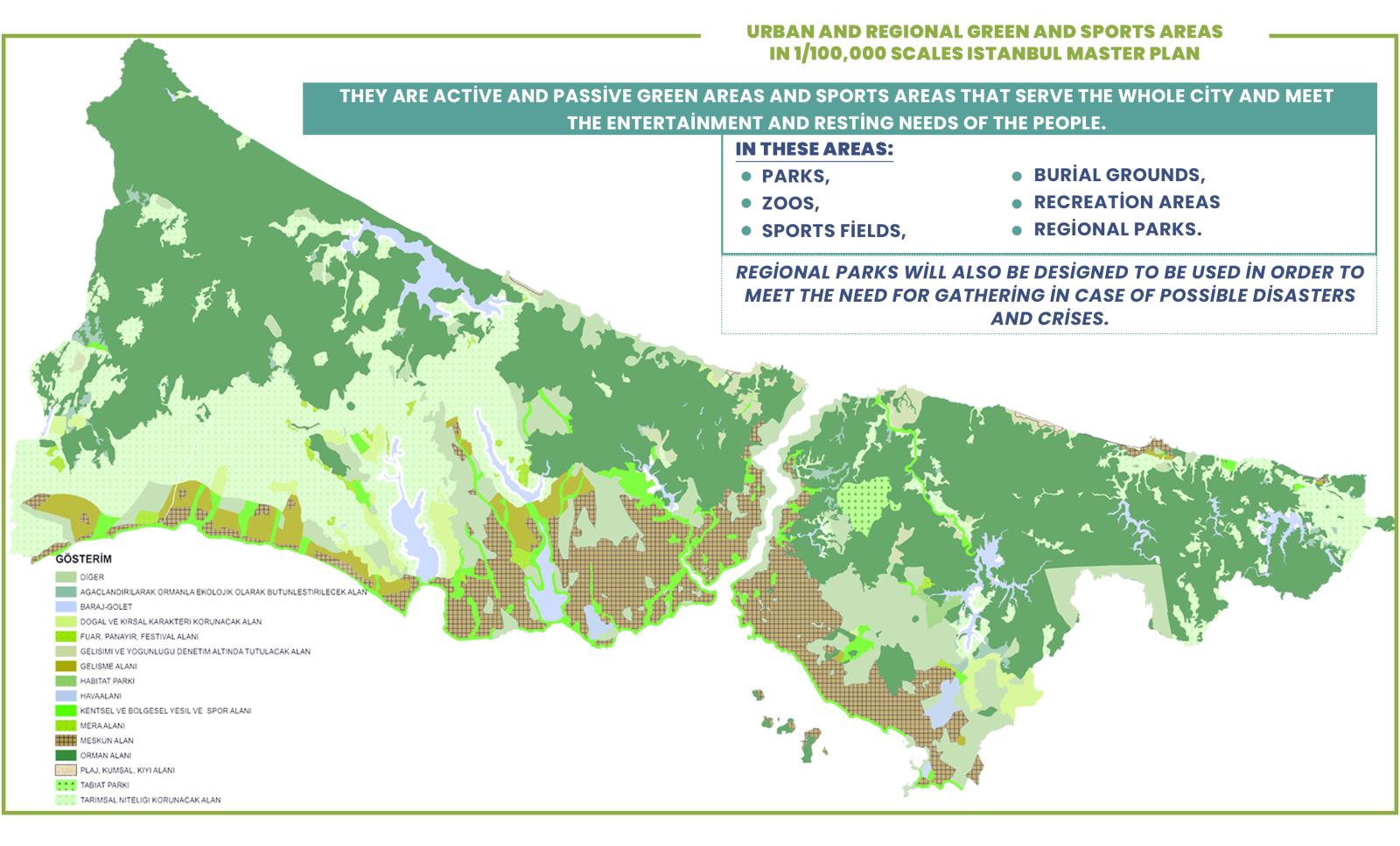
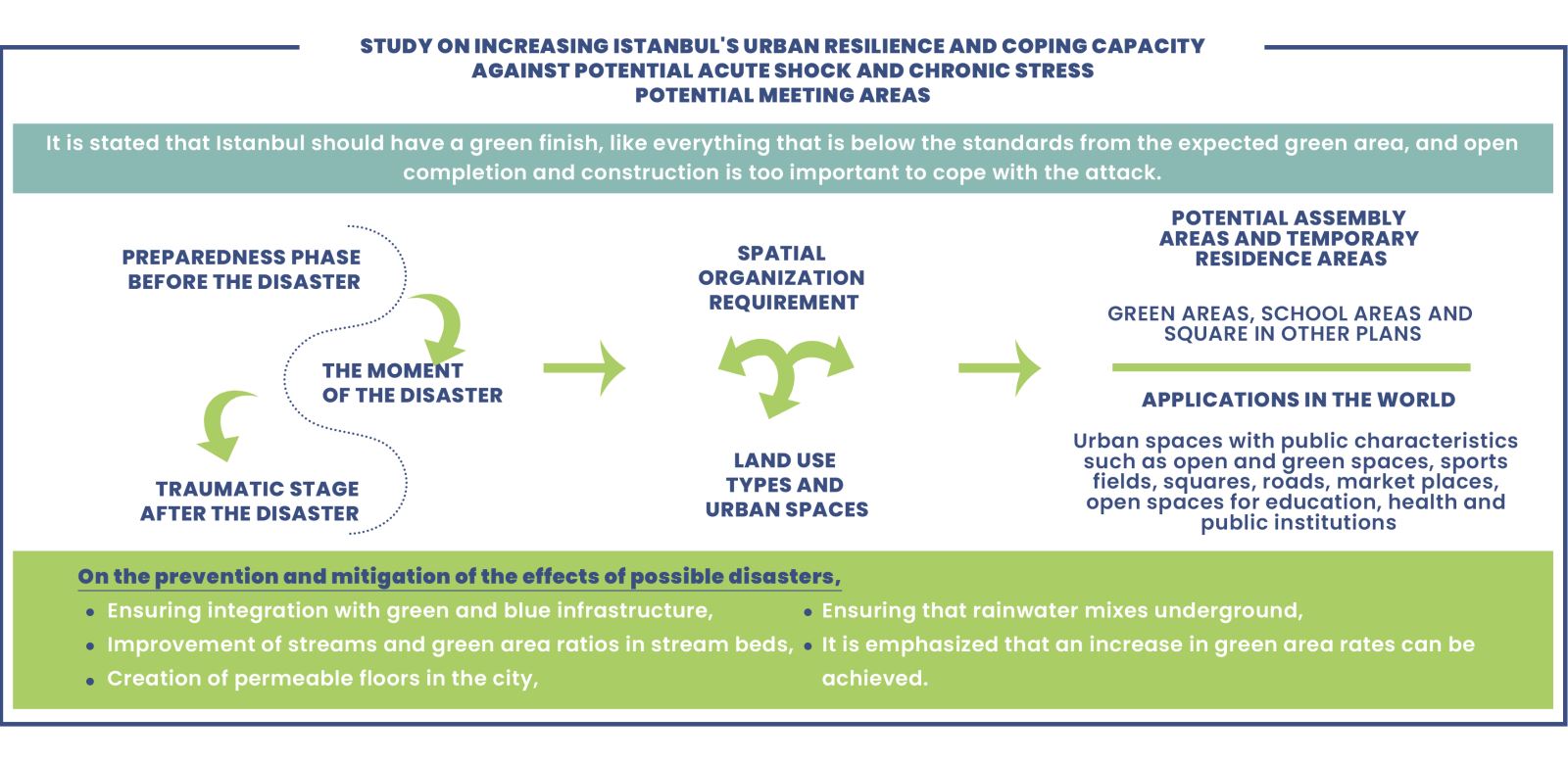
International Comparisons
In order to guide the development of strategies for open and green spaces in Istanbul, the open and green space strategies of 3 cities (New York, London, Vienna), 2 countries (England, Japan) and 1 region (European Union) were examined. For international comparisons, the data in the international sustainable indexes have been compiled and the position of Istanbul in terms of open and green spaces has been revealed.
According to the data obtained from the results of the research, it is seen that Istanbul is in the last place among the world cities with a green space rate of 2.2%. Oslo has the highest rate of green space with a share of 68%, followed by Singapore (47%), Vienna (46%), Chengdu (42.3%), and Zurich (41%). As well as European cities, Asian cities are also in the top ranks (Source: World Cities Culture Report, 2018).
